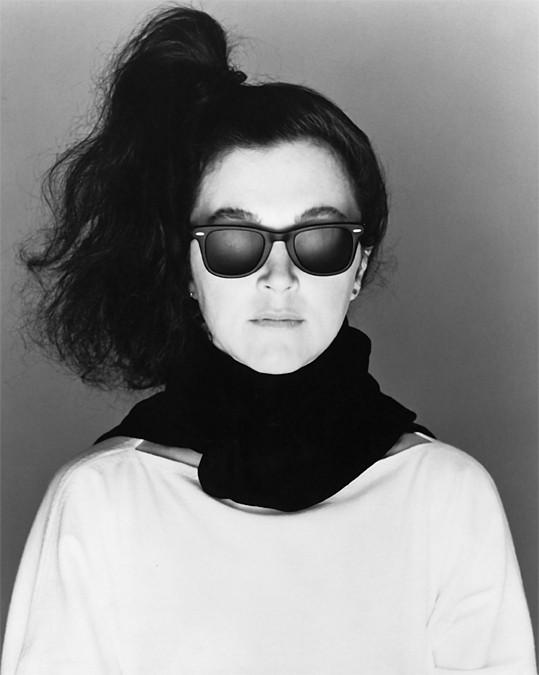
Garratt’s eco-friendly designs continue to be manufactured in the United States.
Fashion designer Sandra Garratt creates everyday clothes for the everyday woman.
That’s not to say she is incapable of making an elegant gown worthy of the red carpet. After all, among the celebrities she has clothed are the late Elizabeth Taylor, Jane Fonda, Stephanie Powers, Raquel Welch, Patti Smith, Chakka Khan and many more.
But Garratt’s target audience has always been the typical American woman, and all of the clothing she produces is made by her and a small team right here in the U.S.A.
“I don’t believe in using people from third-world countries to be exploited as our labor force,” Garratt said. “Made in USA has tremendous international cachet and anyone who claims you can’t be profitable producing in the USA is ignorant of the facts.
“I find it to be far more efficient with faster turns and my profit margins have always been great.”
During the 1980s, Garratt’s “Units” and “Multiples” modular clothing lines were systems of clothing sold as a group that could be mixed and matched to fit any occasion from casual to evening wear. Multiples, a collection of 20 knit separates, was incredibly popular at the time and sold in more than 600 department stores nationwide. The line offered a versatile group of skirts, jumpsuits, leggings, tunics and tubular accessories. The clothes had boxy shapes and were sold folded in a group of plastic bags at a competitive price.
Today, 66-year-old Garratt has reinvented her clothing line as a business in a box. Nor more plastic, but the same durable and versatile styles of her modular approach to clothing.
Garratt’s concept and forward thinking have endeared her to American woman and children. You don’t hit $500 million in sales during the 1980s without understanding the daily needs of women’s clothing.
It is no wonder she obtained such success early in her career. She graduated from the Fashion Institute of Design & Merchandising Los Angeles (FIDM-LA) in 1975 and had her sights set on returning to London to work as a costume designer for dance. Garratt aspired to be a ballerina at a young age, but turned to fashion when the rigors of dance became an obstacle.
“Made in USA has tremendous international cachet and anyone who claims you can’t be profitable producing in the USA is ignorant of the facts. I find it to be far more efficient with faster turns and my profit margins have always been great.” Designer Sandra Garratt
It was her design department chair at FIDM-LA, William Pearson, who convinced her to go into something high volume and manufactured. Garratt was horrified as she had envisioned a career designing costumes for the stage.
“I finally wrapped my mind around it and the modular concept came to me as a vision,” said Garratt. “I felt that in the future there would only be very high-end hand-made luxe clothes and clothes for everyone for every day. I do not think that items for mass production need to be cheap, or knockoffs of luxe styles. A modular approach seemed appropriate. Using mono fabric and cotton interlock knit worked the best.”
The venerable designer had the good fortune of working with some of the legends of the fashion industry, including Bob Mackie, Halston, Zoran, Ossie Clark in London and other fashion houses in Beverly Hills and New York City.
Her big break came in spring 1977 with her first buy by Henri Bendel in New York, a milestone for any potential designer. The 1980s were a tremendously successful period for Garratt, until a major retailer produced exact knockoffs of her work and Garratt stepped out of the spotlight.
But she bounced back when she discovered organic textiles in 1992. Garratt soon became eco-friendly and sought to make “something simple and basic and manufacturing friendly with virtually no waste of goods.” Her styles and construction remain the same to this day.
“Everything is still the same, except I went totally organic in 1992 when it first became commercially viable to use USA grown and milled organic cotton,” she said.
These days, Garratt is living in Palm Springs, Calif., just a two-and-a-half-hour drive from where she spent a good portion of her childhood in Malibu. But in the years between, she has travelled the world both as a student and artisan of fashion.
With her vast experience and tutelage, she continues to produce her modular clothing under the brand name SGDBox (Sandra Garratt Design Box). She has had a steady roster of regular customers throughout the years, and when she gets a bevy or orders, she and her team of sewers get to work cutting and sewing the clothing in California.
Getting to work for Garratt not only means designing but cutting, sewing, labeling and packaging. She is still a hands-on producer of apparel making sure each product gets the same love it did back in 1977.
Selling her products in box form has allowed Garratt to expand into a variety of consumer selections from the original Modbox, which carries the modular dressing system, to the Luxebox for the high-end, Saville Row tailored specialty wear, the Bodybox that includes active wear such as yoga wear, swimwear, sleepwear, underwear and lingerie, to the Kidbox that offers modern clothes for modern kids.
And continually expanding her unique concepts, Garratt has even introduced the Dogbox, which contains eco-friendly products for your canine companion, and the Chocbox to satiate your appetite with hand-blended rich hot chocolate mixes.
Sandra Garratt has made a career out of Modular clothing to meet the everyday needs for modern women who live busy, active lives.
And she does it all right here in America.
To learn more about Garratt and how to order her products online visit http://sandragarratt.com or call (760)-548-0704.
